Signaling Pathways
The antibody-drug conjugate (ADC), a humanized or human monoclonal antibody conjugated with highly cytotoxic small molecules (payloads) through chemical linkers, is a novel therapeutic format and has great potential to make a paradigm shift in cancer chemotherapy. The three components of the ADC together give rise to a powerful oncolytic agent capable of delivering normally intolerable cytotoxins directly to cancer cells, which then internalize and release the cell-destroying drugs. At present, two ADCs, Adcetris and Kadcyla, have received regulatory approval with >40 others in clinical development.
ADCs are administered intravenously in order to prevent the mAb from being destroyed by gastric acids and proteolytic enzymes. The mAb component of the ADC enables it to circulate in the bloodstream until it finds and binds to tumor-specific cell surface antigens present on target cancer cells. Linker chemistry is an important determinant of the safety, specificity, potency and activity of ADCs. Linkers are designed to be stable in the blood stream (to conform to the increased circulation time of mAbs) and labile at the cancer site to allow rapid release of the cytotoxic drug. First generation ADCs made use of early cytotoxins such as the anthracycline, doxorubicin or the anti-metabolite/antifolate agent, methotrexate. Current cytotoxins have far greater potency and can be divided into three main groups: auristatins, maytansines and calicheamicins.
The development of site-specific conjugation methodologies for constructing homogeneous ADCs is an especially promising path to improving ADC design, which will open the way for novel cancer therapeutics.
References:
[1] Tsuchikama K, et al. Protein Cell. 2016 Oct 14. DOI:10.1007/s13238-016-0323-0.
[2] Peters C, et al. Biosci Rep. 2015 Jun 12;35(4). pii: e00225. doi: 10.1042/BSR20150089.
Targets for Signaling Pathways
- Proteases(29)
- Apoptosis(824)
- Chromatin/Epigenetics(15)
- Metabolism(336)
- MAPK Signaling(26)
- Tyrosine Kinase(73)
- DNA Damage/DNA Repair(49)
- PI3K/Akt/mTOR Signaling(38)
- Microbiology & Virology(42)
- Cell Cycle/Checkpoint(168)
- Ubiquitination/ Proteasome(24)
- JAK/STAT Signaling(10)
- TGF-β / Smad Signaling(21)
- Angiogenesis(59)
- GPCR/G protein(3)
- Stem Cell(19)
- Membrane Transporter/Ion Channel(161)
- Cancer Biology(366)
- Endocrinology and Hormones(152)
- Neuroscience(367)
- Obesity, Appetite Control & Diabetes(17)
- Peptide Inhibitors and Substrate(2)
- Other Signal Transduction(156)
- Immunology/Inflammation(934)
- Cardiovascular(98)
- Vitamin D Related(0)
- Antibody-drug Conjugate/ADC Related(0)
- PROTAC(212)
- Ox Stress Reagents(24)
- Others(4010)
- Antiparasitics(6)
- Toxins(62)
Products for Signaling Pathways
- Cat.No. Nom du produit Informations
-
GC65045
(S)-MRTX-1719
(S)-MRTX-1719 (exemple 16-7) est l'énantiomère S du MRTX-1719. (S)-MRTX-1719 est un inhibiteur du complexe PRMT5/MTA, avec une IC50 de 7070 nM.
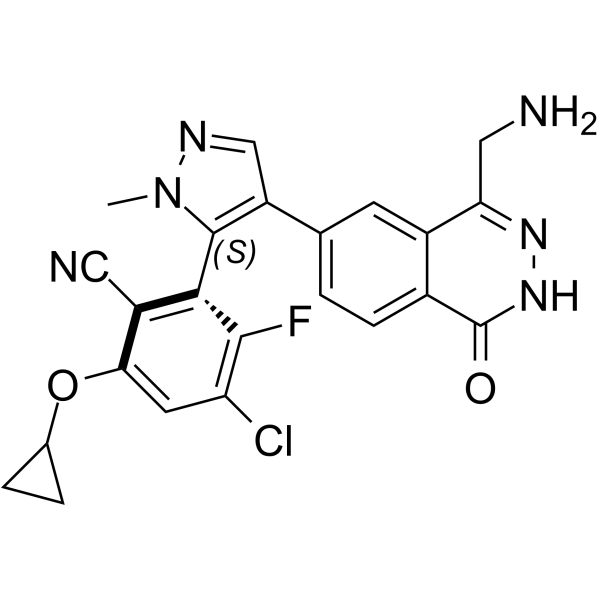
-
GC68476
(S)-Nicardipine
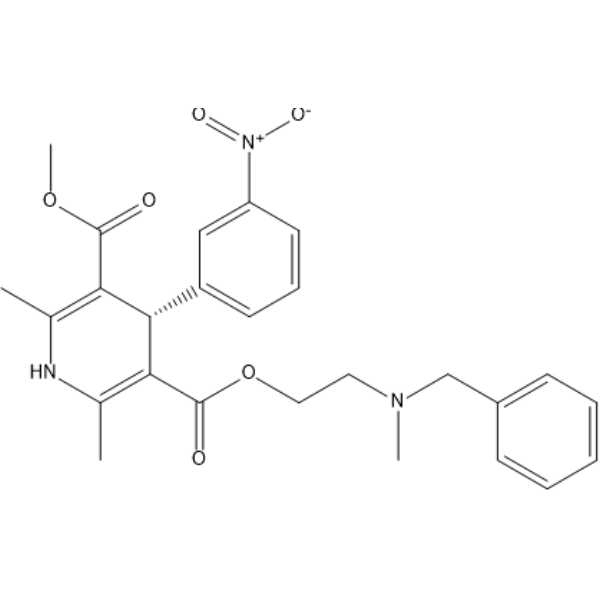
-
GC49179
(S)-O-Desmethyl Naproxen
A metabolite of (S)-naproxen

-
GC62450
(S)-PI3Kα-IN-4
(S)-PI3Kα-IN-4 est un puissant inhibiteur de PI3Kα, avec une IC50 de 2,3 nM. (S)-PI3Kα ; -IN-4 présente une sélectivité de 38,3, 4,25 et 4,93 fois pour PI3Kα ; sur PI3Kβ, PI3Kδ, et PI3Kγ, respectivement. (S)-PI3Kα-IN-4 peut être utilisé pour la recherche sur le cancer.

-
GC69941
(S)-Renzapride
(S)-Renzapride ((S)-BRL 24924) est l'isomère de Renzapride. Renzapride est un agoniste des récepteurs 5-HT4 avec une valeur Ki de 115 nM. Renzapride est également un antagoniste des récepteurs 5HT2b et 5HT3. Renzapride peut être utilisé dans la recherche sur le syndrome du côlon irritable à prédominance constipation (C-IBS).
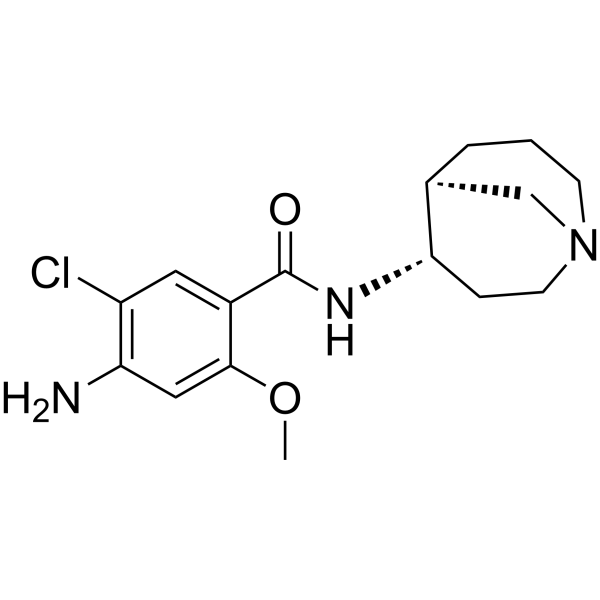
-
GC63797
(S)-Sunvozertinib
Le (S)-Sunvozertinib ((S)-DZD9008), l'énantiomère S du Sunvozertinib, présente une activité inhibitrice contre les insertions EGFR exon 20 NPH et ASV, la mutation EGFR L858R/T790M et l'insertion Her2 exon20 YVMA (IC50 = 51,2 nM, 51,9 nM , 1 nM et 21,2 nM, respectivement). Le (S)-Sunvozertinib inhibe également la BTK.
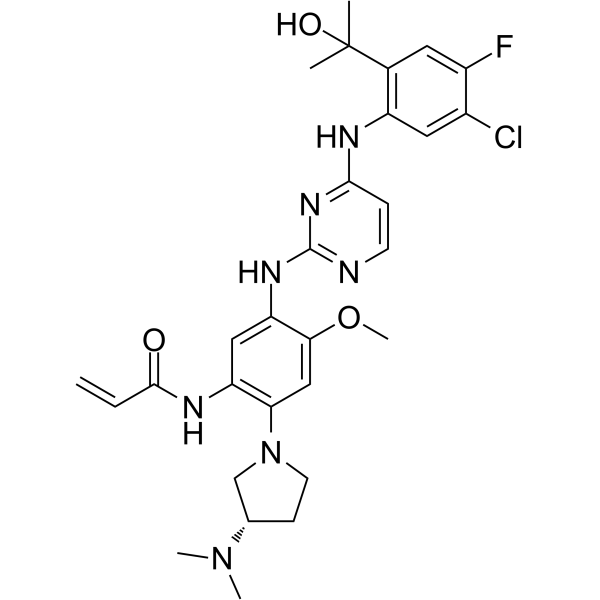
-
GC66064
(S)-Thalidomide
Le (S)-Thalidomide ((S)-(-)-Thalidomide) est l'énantiomère S du Thalidomide. Le (S)-thalidomide a des effets immunomodulateurs, anti-inflammatoires, anti-angiogéniques et pro-apoptotique. Le (S)-thalidomide induit des effets tératogènes en se liant au céréblon (CRBN) .
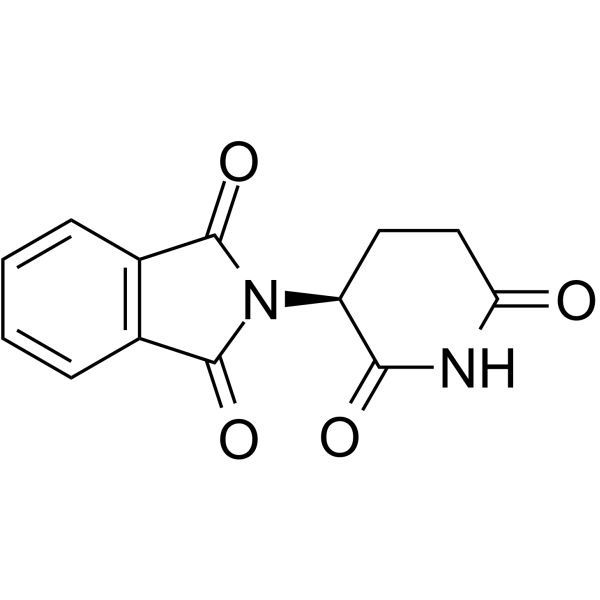
-
GC69977
(S)-Veliflapon
(S)-Veliflapon ((S)-BAY X 1005) est un inhibiteur de la biosynthèse des leucotriènes et de la protéine activatrice de la 5-lipoxygénase (FLAP) ayant une activité par voie orale. (S)-Veliflapon inhibe la formation du leucotriène B4 (LTB4) dans les leucocytes humains, de souris et de rats avec des valeurs IC50 respectives de 0,026 µM, 0,039 µM et 0,22 µM. (S)-Veliflapon présente une sélectivité énantiomérique dans le sang humain.
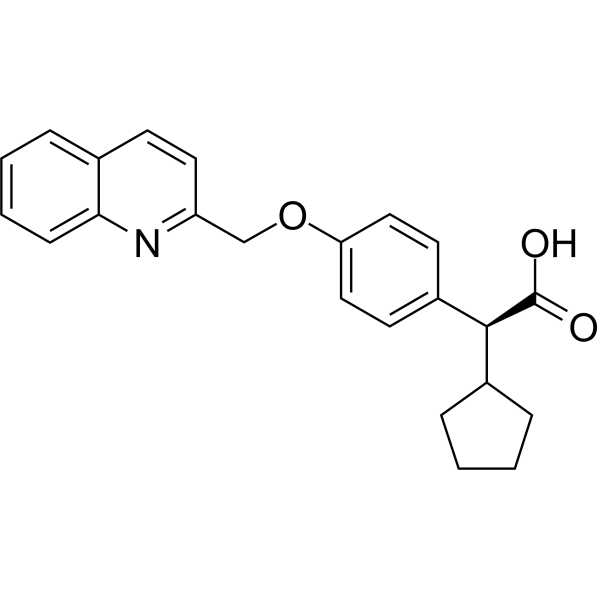
-
GC69979
(S)-VQW-765
(S)-VQW-765 ((S)-AQW-051) est un agoniste partiel sélectif et efficace des récepteurs nicotiniques de l'acétylcholine (nAChR) α7, ayant une activité orale. Le (S)-VQW-765 a un potentiel d'application dans les troubles cognitifs associés aux maladies neurologiques telles que la maladie d'Alzheimer ou la schizophrénie.
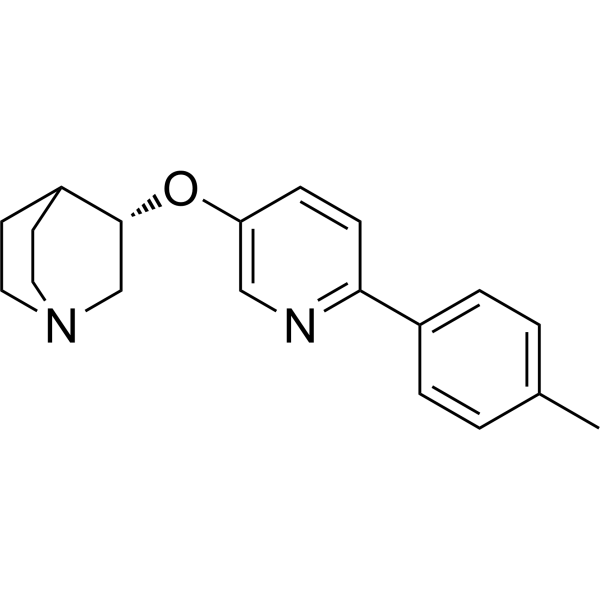
-
GC65883
(S,R)-WT IDH1 Inhibitor 2
(S,R)-WT IDH1 Inhibitor 2 (GSK321) est un puissant inhibiteur IDH1 mutant sélectif avec des valeurs IC50 de 2,9, 3,8, 4,6 et 46 nM pour R132G, R132C, R132H et WT IDH1, respectivement, et >100 fois sélectivité sur IDH2. (S,R)-WT IDH1 Inhibitor 2 induit une diminution du 2-HG intracellulaire, l'abrogation du bloc de différenciation myéloÏde et l'induction de la différenciation granulocytaire au niveau des blastes leucémiques et des cellules souches plus immatures. (S,R)-WT IDH1 Inhibitor 2 peut être utilisé pour la recherche sur la leucémie myéloÏde aiguë (LMA) et d'autres cancers.

-
GC62283
(S,R,S)-AHPC
(S,R,S)-AHPC (VH032-NH2) est le ligand VHL basé sur VH032 utilisé dans le recrutement de la protéine von Hippel-Lindau (VHL). (S,R,S)-AHPC peut être connecté au ligand de la protéine (par exemple, BCR-ABL1) par un lieur pour former des PROTAC (par exemple, GMB-475). Le GMB-475 induit la dégradation de BCR-ABL1 avec une IC50 de 1,11 μM dans les cellules Ba/F3.
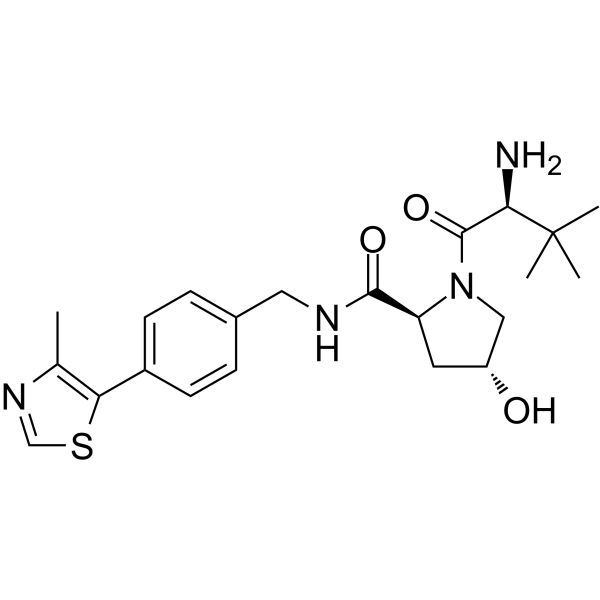
-
GC69944
(S,R,S)-AHPC-3-methylbutanyl acetate-methanesulfonothioate-Me-C10-NH2 TFA
(S,R,S)-AHPC-3-méthylbutanyl acétate-méthanesulfonothioate-Me-C10-NH2 TFA est un ligand de l'enzyme de liaison E3 synthétique couplé à un linker, contenant le ligand (S,R,S)-AHPC et pouvant être utilisé dans la recherche PROTAC.
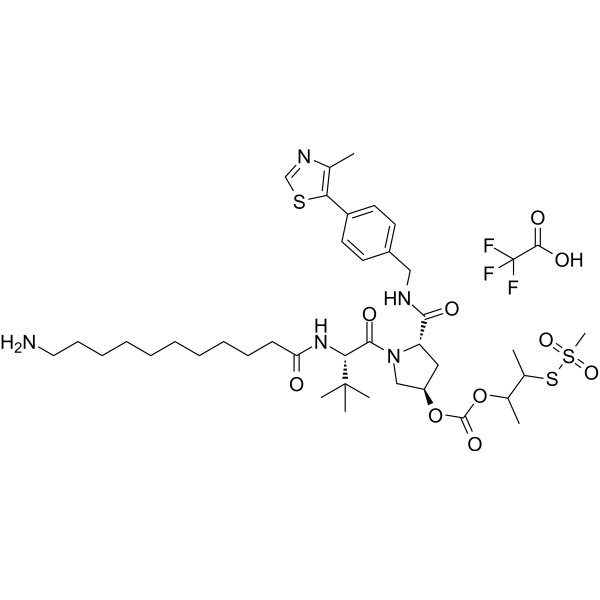
-
GC69945
(S,R,S)-AHPC-3-methylbutanyl acetate-methanesulfonothioate-PEG3-NH2 TFA
(S,R,S)-AHPC-3-méthylbutanyl acétate-méthanesulfonothioate-PEG3-NH2 TFA est un ligand de l'enzyme de liaison E3 synthétique couplé à un linker, contenant un ligand basé sur (S,R,S)-AHPC et trois unités PEG linker.

-
GC62148
(S,R,S)-AHPC-amido-C5-acid
L'acide (S,R,S)-AHPC-amido-C5 incorpore un ligand VHL pour l'ubiquitine ligase E3 et un lieur PROTAC. L'acide (S,R,S)-AHPC-amido-C5 peut être utilisé pour concevoir XY028-133.
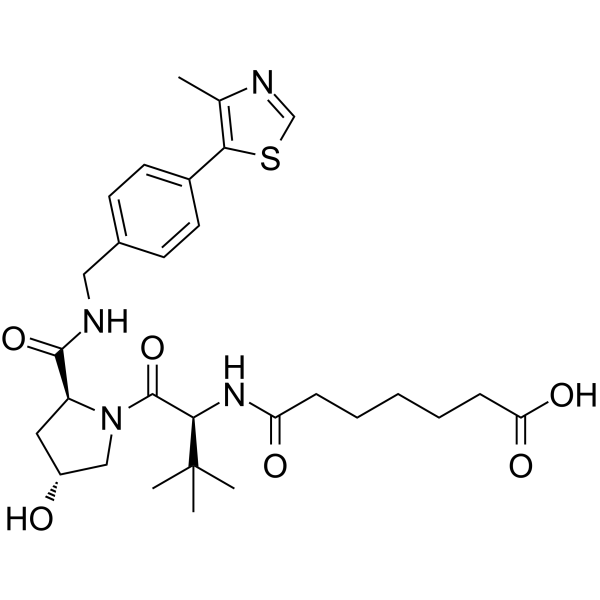
-
GC69946
(S,R,S)-AHPC-amido-C7-acid
(S,R,S)-AHPC-amido-C7-acide contient un ligand VHL pour le recrutement d'enzymes de liaison à l'ubiquitine E3 et une tête PROTAC. (S,R,S)-AHPC-amido-C5-acide peut être utilisé pour concevoir des PROTACs.
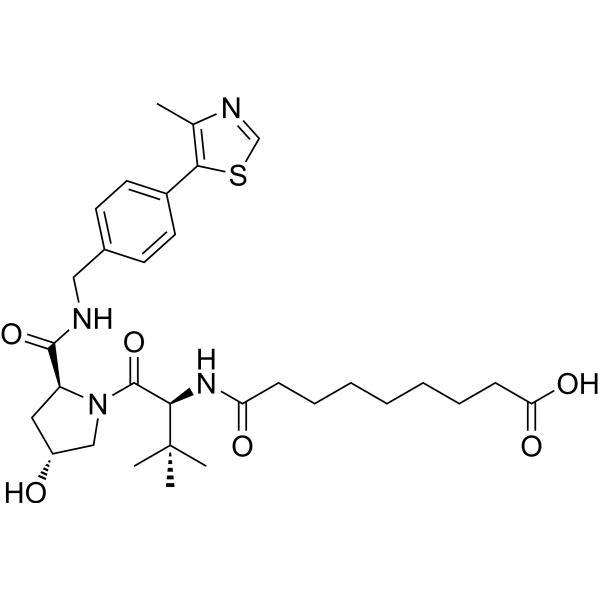
-
GC62684
(S,R,S)-AHPC-Boc-trans-3-aminocyclobutanol-Pip-CH2COOH
(S,R,S)-AHPC-Boc-trans-3-aminocyclobutanol-Pip-CH2COOH (VH032-Boc-trans-3-aminocyclobutanol-Pip-CH2COOH) est un conjugué ligand-linker E3 ligase qui contient À une extrémité un Ligand VHL. Le (S,R,S)-AHPC-Boc-trans-3-aminocyclobutanol-Pip-CH2COOH est utilisé dans la technologie PROTAC.
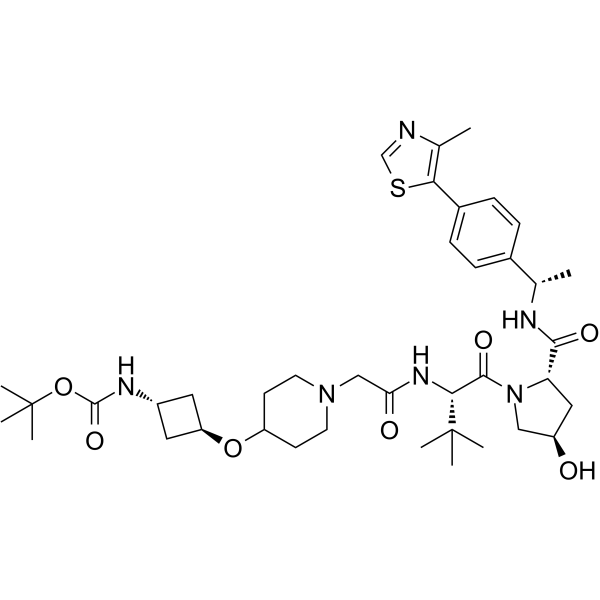
-
GC69947
(S,R,S)-AHPC-C10-NHBoc
(S,R,S)-AHPC-C10-NHBoc est un conjugué ligand-linker d'enzyme de liaison E3 synthétique, contenant un ligand VHL basé sur (S,R,S)-AHPC et un connecteur. Il peut être utilisé pour la synthèse de PROTAC ciblant BET.
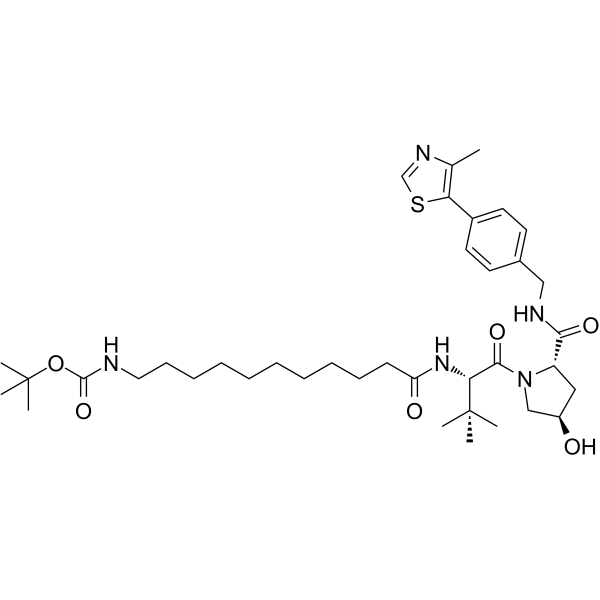
-
GC68352
(S,R,S)-AHPC-C2-amide-benzofuranylmethyl-pyridine

-
GC69743
(S,R,S)-AHPC-C4-NH2 hydrochloride
Le chlorhydrate de (S,R,S)-AHPC-C4-NH2 est un conjugué ligand-linker pour l'enzyme de liaison E3 synthétique, comprenant le ligand VHL basé sur (S,R,S)-AHPC et un linker. Il est utilisé pour la synthèse d'un PROTAC ciblant EED.
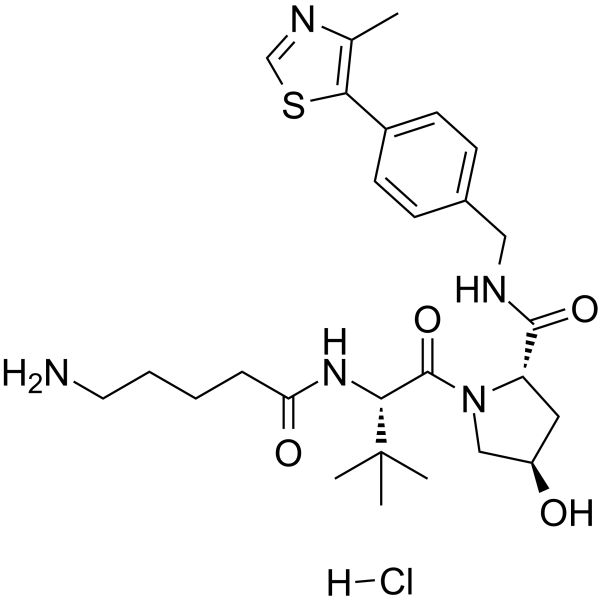
-
GC65133
(S,R,S)-AHPC-C5-COOH
(S,R,S)-AHPC-C5-COOH (VH032-C5-COOH) est un conjugué ligand-lieur de ligase E3 synthétisé, contient le ligand À base de VH032 VHL et un lieur pour former des PROTAC. VH-032 est un inhibiteur sélectif et puissant de l'interaction VHL/HIF-1α avec un Kd de 185 nM, a le potentiel pour l'étude de l'anémie et des maladies ischémiques.
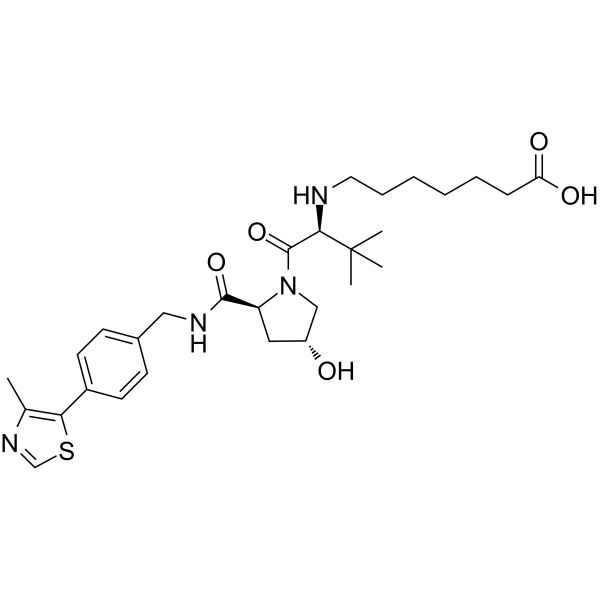
-
GC69948
(S,R,S)-AHPC-CO-C9-acid
(S,R,S)-AHPC-CO-C9-acide est un ligand de l'enzyme de liaison E3-connexion, qui peut se lier à un ligand protéique pour former un PROTAC.
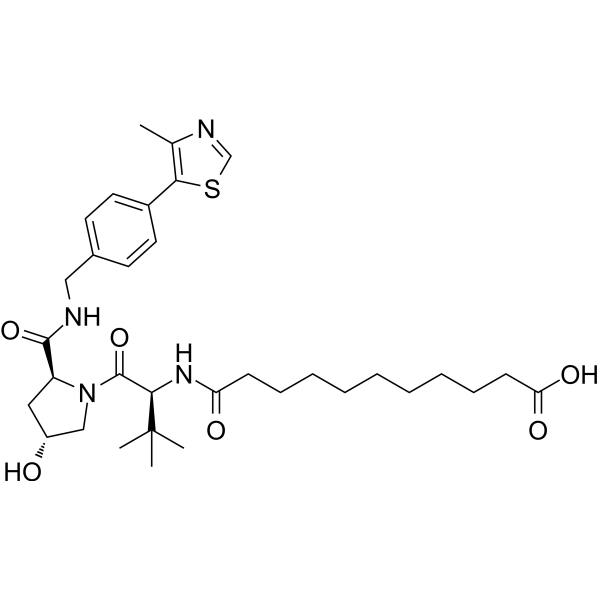
-
GC69949
(S,R,S)-AHPC-isobutyl acetate-methanesulfonothioate-Me-C10-NH2 TFA
(S,R,S)-AHPC-isobutyl acetate-methanesulfonothioate-Me-C10-NH2 TFA fait partie du PROTAC BRD4 Degrader-12.
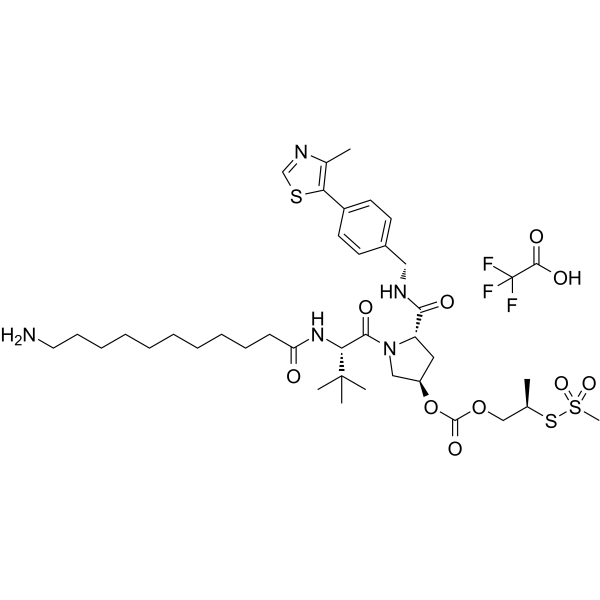
-
GC67831
(S,R,S)-AHPC-Me-C10-Br
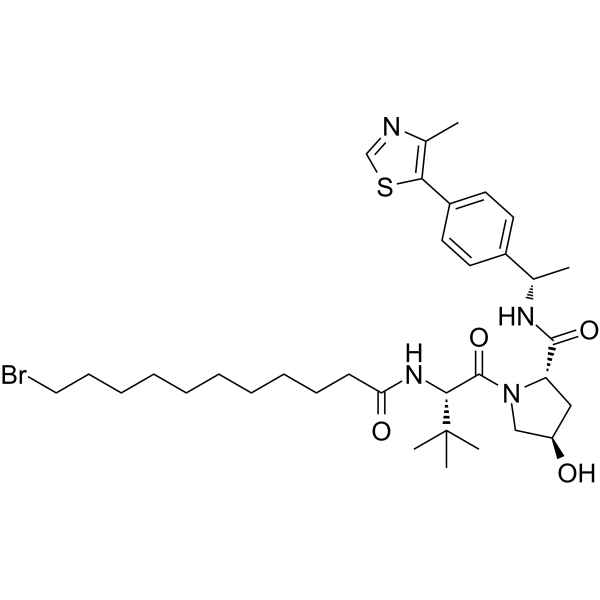
-
GC64371
(S,R,S)-AHPC-Me-C10-NH2
(S,R,S)-AHPC-Me-C10-NH2 est un conjugué ligand-lieur E3 ligase synthétisé qui incorpore un ligand VHL et un lieur. (S,R,S)-AHPC-Me-C10-NH2 peut être utilisé dans PROTAC MS432.

-
GC63494
(S,R,S)-AHPC-Me-C5-COOH
(S,R,S)-AHPC-Me-C5-COOH est un conjugué ligand-lieur E3 ligase synthétisé qui incorpore un ligand VHL et un lieur. (S,R,S)-AHPC-Me-C5-COOH peut être utilisé dans PROTAC DT2216.
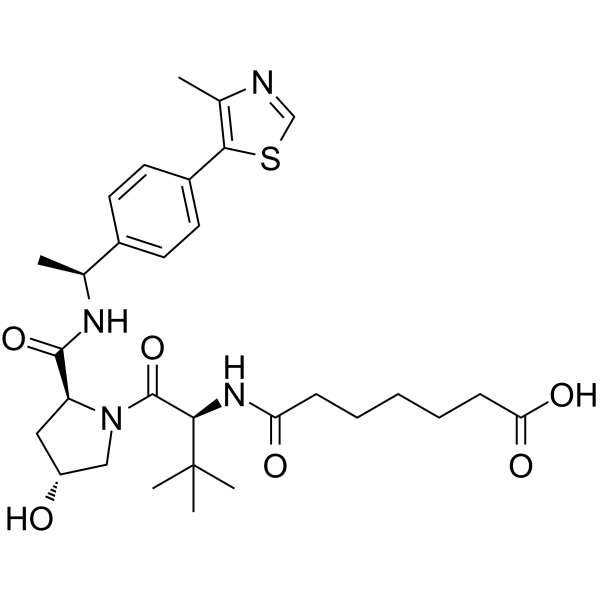
-
GC67729
(S,R,S)-AHPC-Me-C6-NH2

-
GC63561
(S,R,S)-AHPC-Me-C7 ester
L'ester (S,R,S)-AHPC-Me-C7 est un conjugué ligand-lieur E3 ligase utilisé pour synthétiser les dégradeurs BCL-XL PROTAC.

-
GC62585
(S,R,S)-AHPC-Me-CO-CH2-PEG3-NH2
(S,R,S)-AHPC-Me-CO-CH2-PEG3-NH2 est un conjugué ligand-lieur E3 ligase synthétisé qui incorpore un ligand VHL et un lieur. (S,R,S)-AHPC-Me-CO-CH2-PEG3-NH2 peut être utilisé dans PROTAC BRD4 Degrader-5 et PROTAC BRD4 Degrader-5-CO-PEG3-N3.
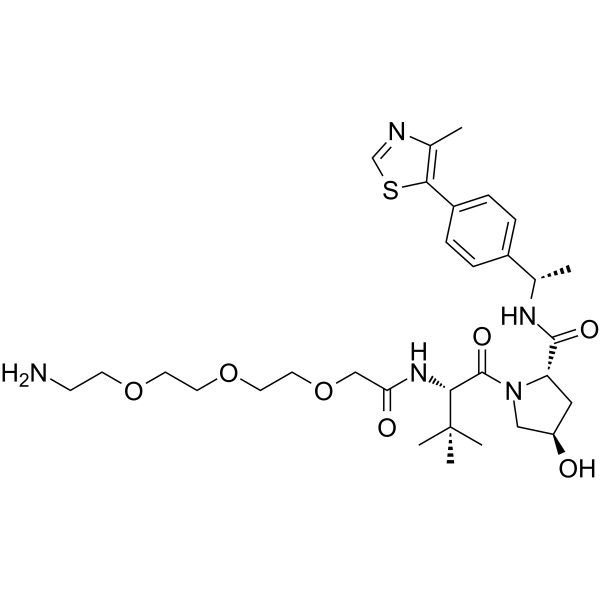
-
GC62183
(S,R,S)-AHPC-O-Ph-PEG1-NH2
(S,R,S)-AHPC-O-Ph-PEG1-NH2 (VH032-O-Ph-PEG1-NH2) est un conjugué ligand-linker E3 ligase et incorpore un ligand VHL pour l'ubiquitine ligase E3 et un linker PROTAC . Le (S,R,S)-AHPC-O-Ph-PEG1-NH2 est utilisé dans le dégradeur PROTAC EED-1. PROTAC EED degrader-1 est un PROTAC ciblant l'EED avec un pKD de 9,02.
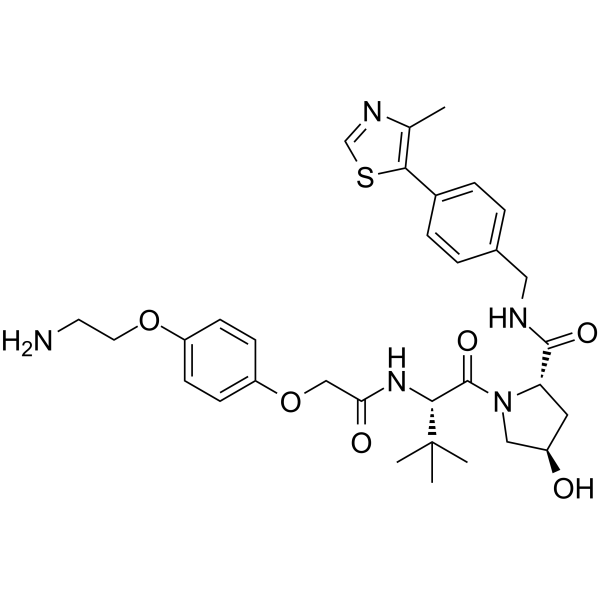
-
GC66630
(S,R,S)-AHPC-PEG2-acid
L'acide (S,R,S)-AHPC-PEG2 est un lieur PROTAC à base de PEG qui peut être utilisé dans la synthèse des PROTAC.
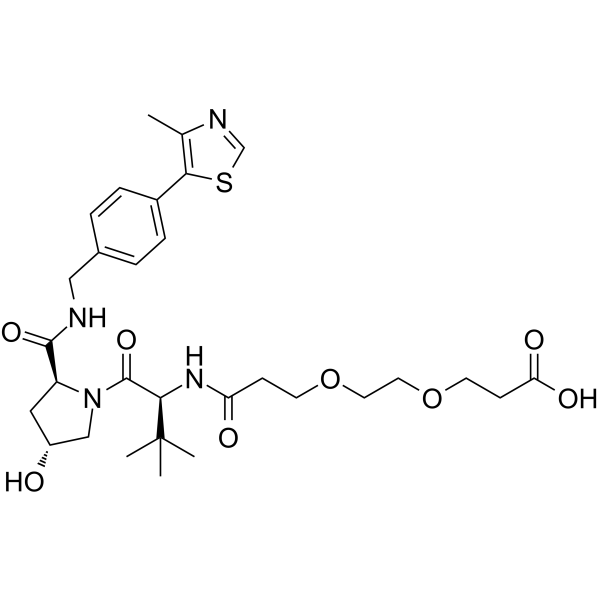
-
GC61774
(S,R,S)-AHPC-PEG5-Boc
(S,R,S)-AHPC-PEG5-Boc est un conjugué ligand-lieur de la ligase E3 qui incorpore le ligand VHL À base de (S,R,S)-AHPC et un lieur utilisé pour le dégradeur Cdc20 CP5V.
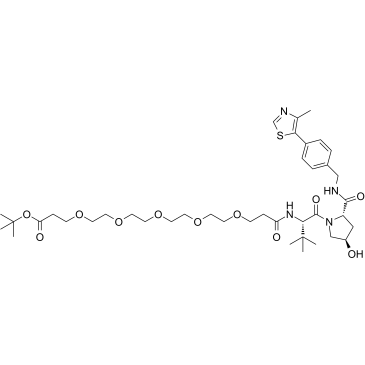
-
GC67672
(S,S)-GNE 5729

-
GC67682
(S,S)-GSK321

-
GC64535
(S,S)-TAPI-1
(S,S)-TAPI-1 est un isomère de TAPI-1.

-
GC67761
(Z)-10-Hydroxynortriptyline-d3
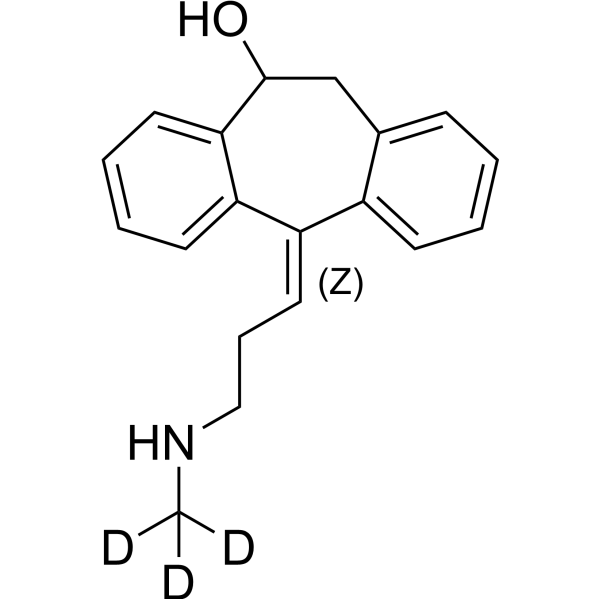
-
GC62291
(Z)-Orantinib
Le (Z)-orantinib ((Z)-SU6668) est un inhibiteur puissant, sélectif, actif par voie orale et compétitif de l'ATP de Flk‐1/KDR, PDGFRβ et FGFR1, avec des IC50 de 2,1, 0,008 et 1,2 μM, respectivement. Le (Z)-orantinib est un puissant agent antiangiogénique et antitumoral qui induit la régression des tumeurs établies.

-
GC11965
(±)-Huperzine A
A neuroprotective AChE inhibitor
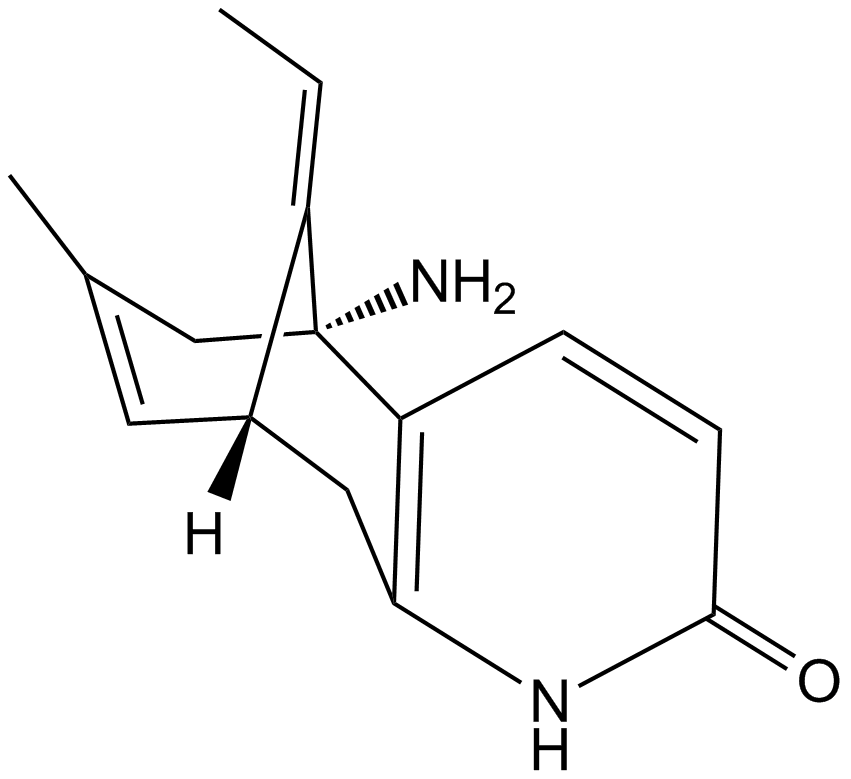
-
GC14252
(–)-Stepholidine
A dopamine receptor antagonist and 5-HT1A partial agonist
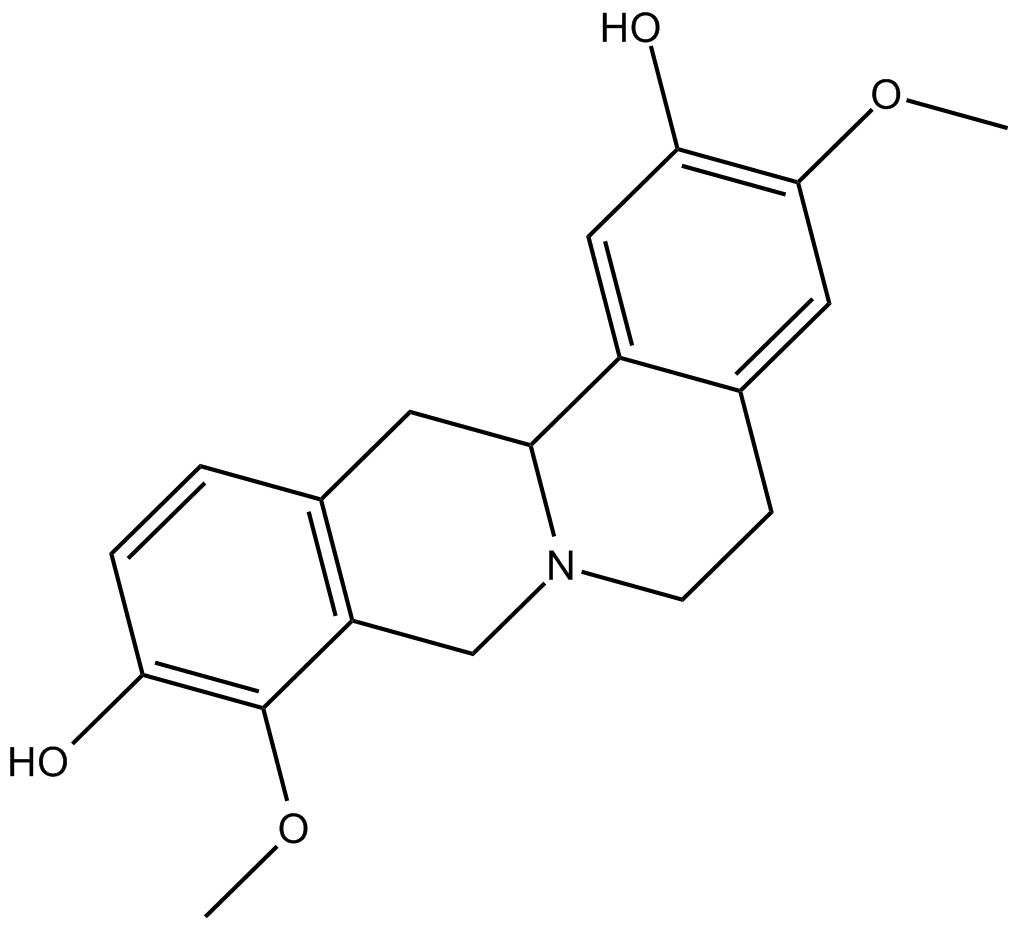
-
GC63946
0990CL
0990CL est un inhibiteur spécifique de la sous-unité Gαi hétérotrimérique par interaction directe avec Gαi.
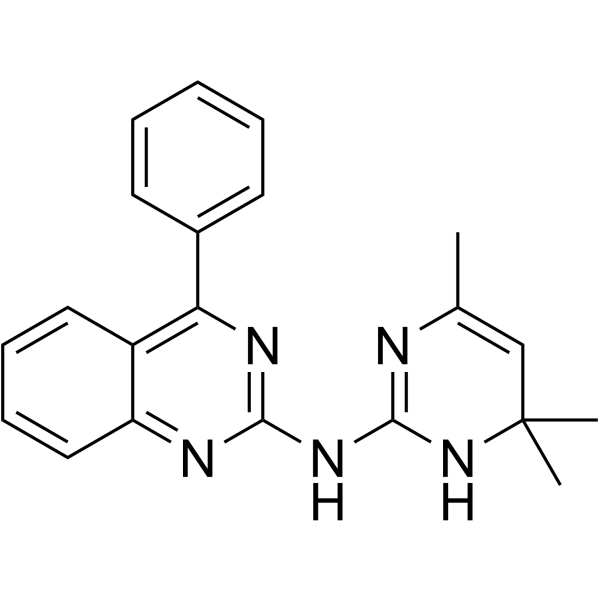
-
GC62761
1α-Hydroxy-3-epi-vitamin D3
1α ; - L'hydroxy-3-épi-vitamine D3, un métabolite naturel de la 1alpha,25-dihydroxyvitamine D3, est un puissant suppresseur de la sécrétion de l'hormone parathyroÏdienne (PTH).

-
GC49034
1(R)-(Trifluoromethyl)oleyl alcohol
An oleic acid analog

-
GC65171
1,1′,1′′,1′′′-[1,4-Piperazinediylbis(2,1-ethanediylnitrilo)]tetrakis[2-dodecanol]
1,1′,1′′,1′′′-[1,4-Piperazinediylbis(2,1-ethanediylnitrilo)]tetrakis[2-dodecanol] is a lipid/lipidoid used in preparation of lipid-based or nanoparticules lipidoïdes.
![1,1′,1′′,1′′′-[1,4-Piperazinediylbis(2,1-ethanediylnitrilo)]tetrakis[2-dodecanol] Chemical Structure 1,1′,1′′,1′′′-[1,4-Piperazinediylbis(2,1-ethanediylnitrilo)]tetrakis[2-dodecanol] Chemical Structure](/media/struct/GC6/GC65171.png)
-
GC49768
1,1’-Ethylidene-bis-(L-tryptophan)
A potential impurity found in commercial preparations of L-tryptophan

-
GC65729
1,1,1-Trifluoroethyl-PEG2-azide
Le 1,1,1-trifluoroéthyl-PEG2-azide est un lieur PROTAC À base de PEG qui peut être utilisé dans la synthèse des PROTAC.
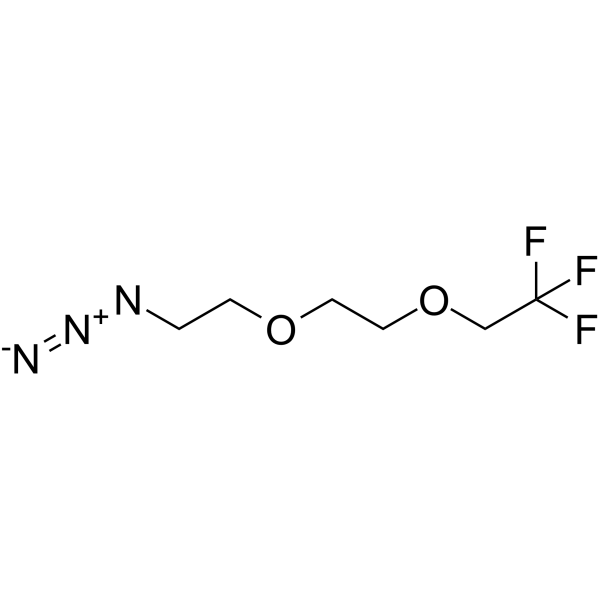
-
GC65715
1,1,1-Trifluoroethyl-PEG2-propargyl
Le 1,1,1-trifluoroéthyl-PEG2-propargyl est un lieur PROTAC À base de PEG qui peut être utilisé dans la synthèse des PROTAC.
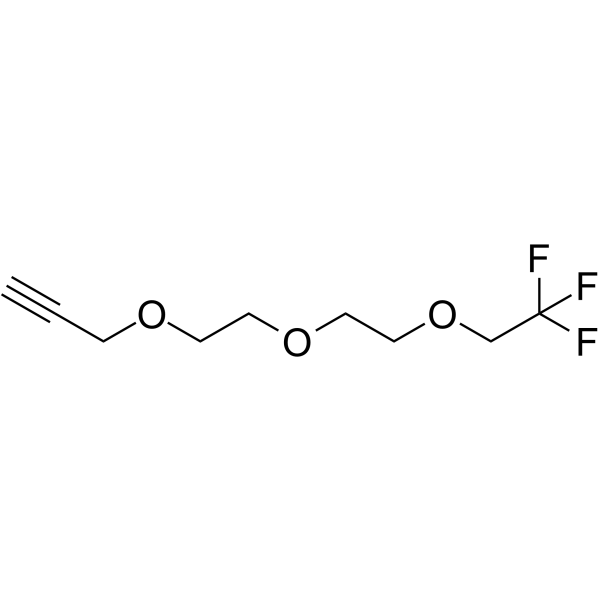
-
GC66567
1,1,1-Trifluoroethyl-PEG4-alcohol
L'alcool 1,1,1-trifluoroéthyl-PEG4 est un lieur PROTAC à base de PEG qui peut être utilisé dans la synthèse des PROTAC.
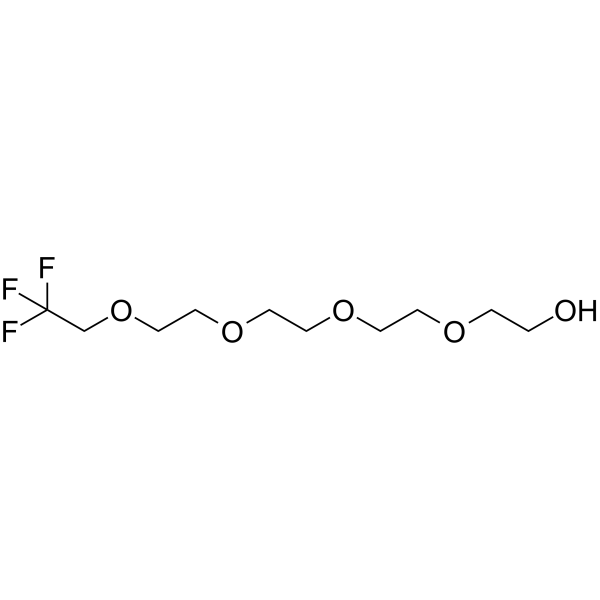
-
GC67011
1,1,1-Trifluoroethyl-PEG4-amine
La 111-trifluoroéthyl-PEG4-amine est un lieur PROTAC à base de PEG qui peut être utilisé dans la synthèse des PROTAC.

-
GC67295
1,1,1-Trifluoroethyl-PEG4-aminooxy
Le 1,1,1-trifluoroéthyl-PEG4-aminooxy est un lieur PROTAC à base de PEG qui peut être utilisé dans la synthèse des PROTAC.
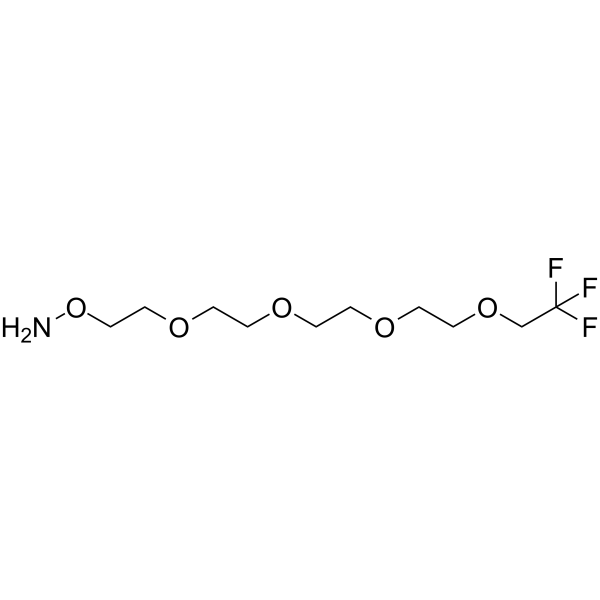
-
GC67595
1,1,1-Trifluoroethyl-PEG4-azide
Le 111-trifluoroéthyl-PEG4-azide est un lieur PROTAC à base de PEG qui peut être utilisé dans la synthèse des PROTAC.
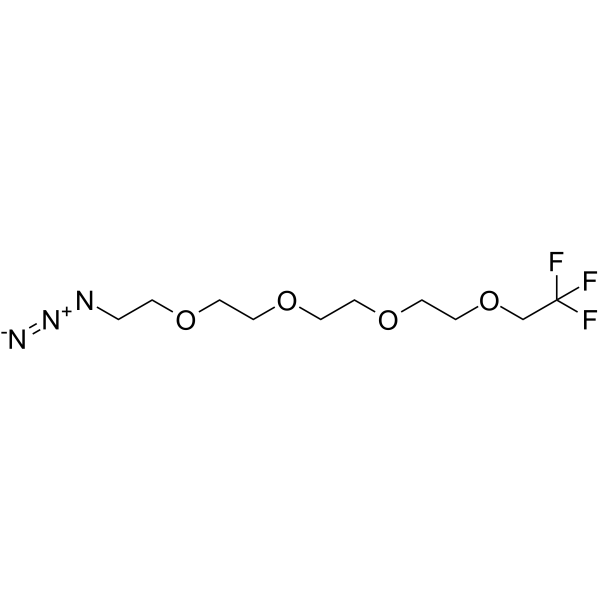
-
GC66971
1,1,1-Trifluoroethyl-PEG4-propargyl
Le 1,1,1-trifluoroéthyl-PEG4-propargyl est un lieur PROTAC à base de PEG qui peut être utilisé dans la synthèse des PROTAC.
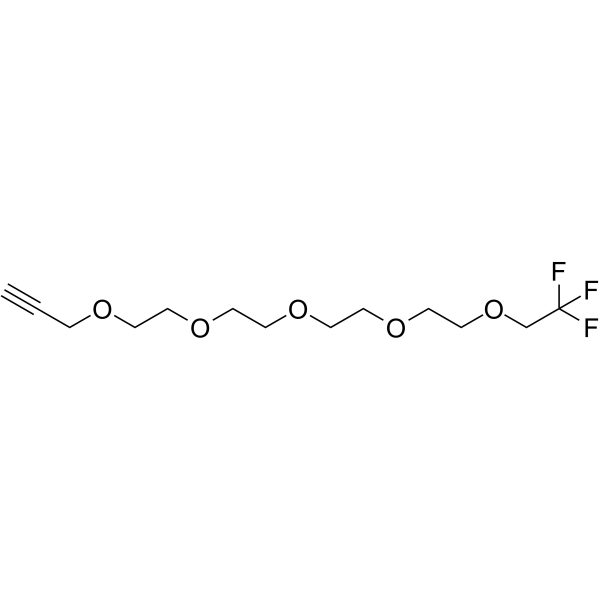
-
GC65718
1,1,1-Trifluoroethyl-PEG4-Tos
Le 1,1,1-trifluoroéthyl-PEG4-Tos est un lieur PROTAC À base de PEG qui peut être utilisé dans la synthèse des PROTAC.
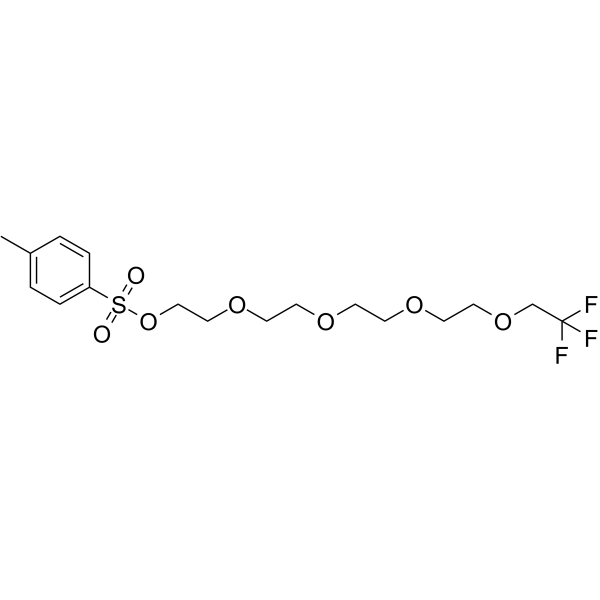
-
GC67833
1,1,3-Tribromoacetone

-
GC17055
1,2,3,4,5,6-Hexabromocyclohexane
1,2,3,4,5,6-六溴环己烷(1,2,3,4,5,6-Hexabromocyclohexane)直接抑制JAK2激酶结构域内的口袋,抑制自身磷酸化。

-
GC61719
1,2,3,4-Tetramethylbenzene
Le 1,2,3,4-tétraméthylbenzène est constitué d'un noyau benzénique avec quatre groupes méthyle (-CH3) comme substituant.
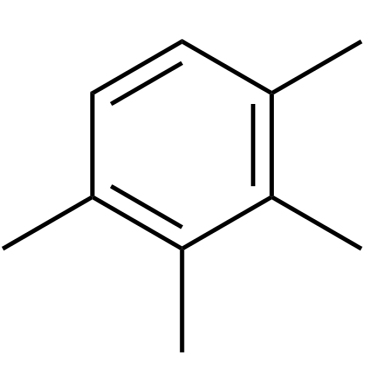
-
GC61729
1,2,3-Trimethoxybenzene
Le 1,2,3-triméthoxybenzène fait partie de la classe de composés connus sous le nom d'anisoles.
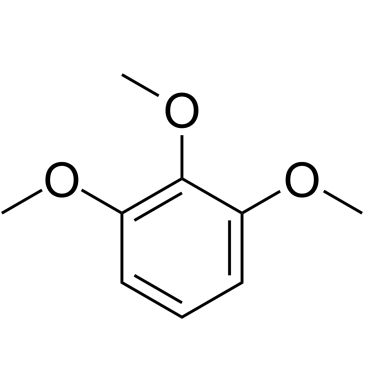
-
GC61898
1,2,4-Trihydroxybenzene
Le 1,2,4-trihydroxybenzène (hydroxyhydroquinone), un sous-produit de la torréfaction des grains de café, augmente la concentration intracellulaire de Ca2+ dans les lymphocytes thymiques du rat.

-
GC66452
1,2-Bis(3-(trifluoromethyl)phenyl)diselane
Le 1,2-bis(3-(trifluorométhyl)phényl)disélane est un composé actif et peut être utilisé pour la recherche.
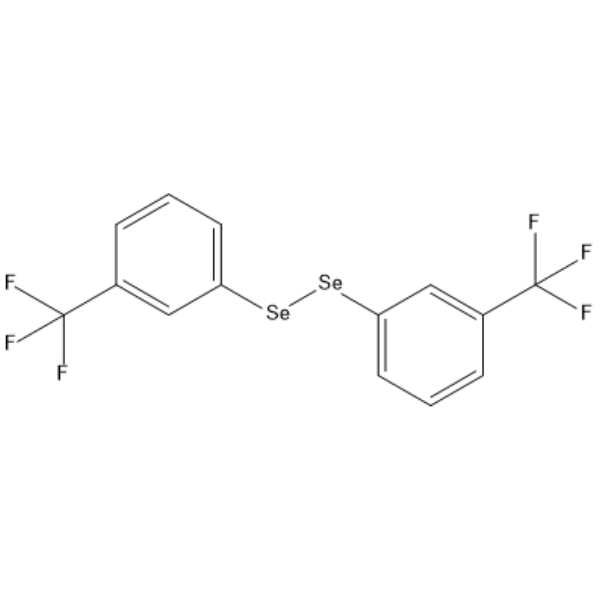
-
GC68484
1,2-O-Isopropylidene-5-O-p-toluoyl-a-D-xylofuranose
1,2-O-Isopropylidene-5-O-p-toluoyl-a-D-xylofuranose est un analogue de nucléoside purique. Les analogues de nucléosides puriques ont une activité antitumorale étendue et ciblent les tumeurs malignes du système lymphatique inerte. Le mécanisme anticancéreux dans ce processus dépend de l'inhibition de la synthèse d'ADN, l'induction de l'apoptose cellulaire, etc.
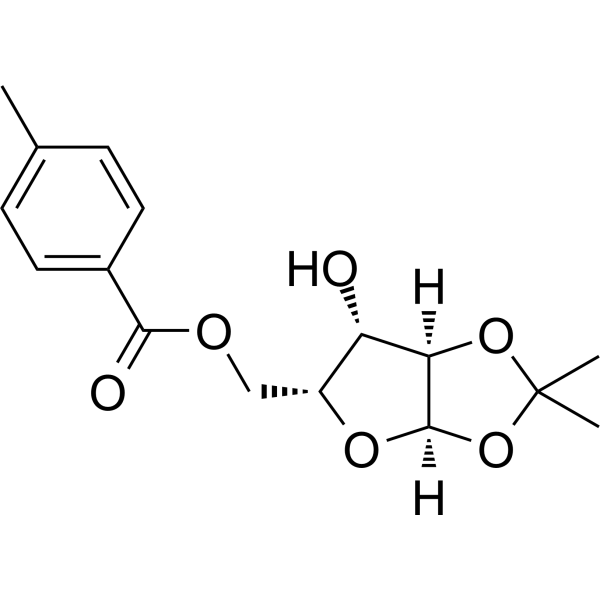
-
GC61731
1,3,5-Triisopropylbenzene
Le 1,3,5-triisopropylbenzène agit comme carburant et additif pour carburant.
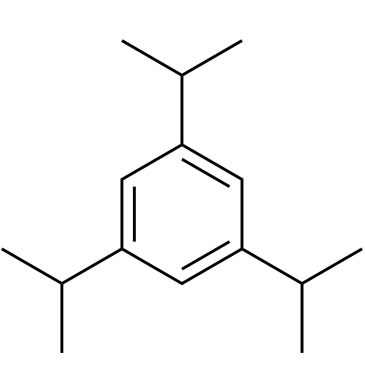
-
GC61399
1,3,6,8-Tetrahydroxynaphthalene
Le 1,3,6,8-tétrahydroxynaphtalène (T4HN) est un précurseur indispensable de la mélanine DHN (1,8-dihydroxynaphtalène) et est un composé symétrique unique d'origine polycétide.
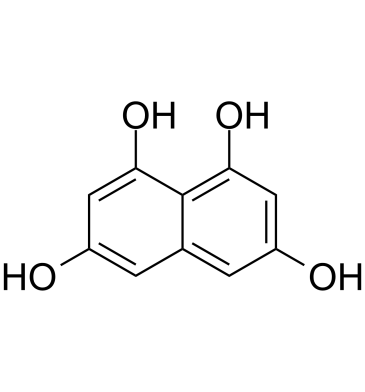
-
GC49220
1,3-Benzodioxole-5,6-diamine (hydrochloride)
A fluorescent derivatization reagent

-
GC66949
1,3-bis(carboxyethoxy)-2,2-bis(carboxyethoxy)propane
Le 1,3-bis(carboxyéthoxy)-2,2-bis(carboxyéthoxy)propane est un lieur PROTAC à base de PEG qui peut être utilisé dans la synthèse de PROTAC.
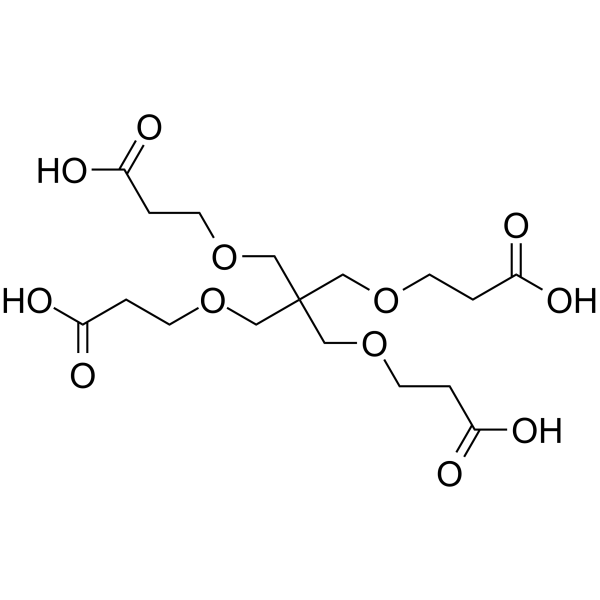
-
GC67054
1,3-Bis-aminooxy propane
Le 1,3-bis-aminooxypropane est un lieur PROTAC à base de chaîne alkyle qui peut être utilisé dans la synthèse des PROTAC.
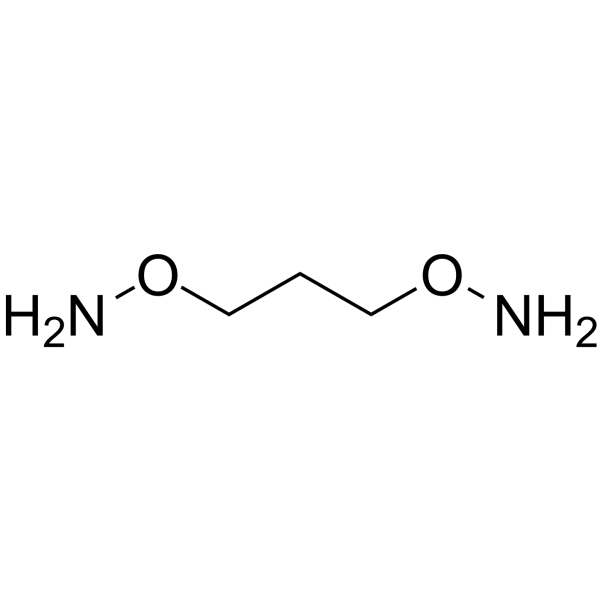
-
GC62352
1,3-Butanediol
1,3-Butanediol, un dimère d'éthanol fournissant une source de calories pour l'alimentation humaine.
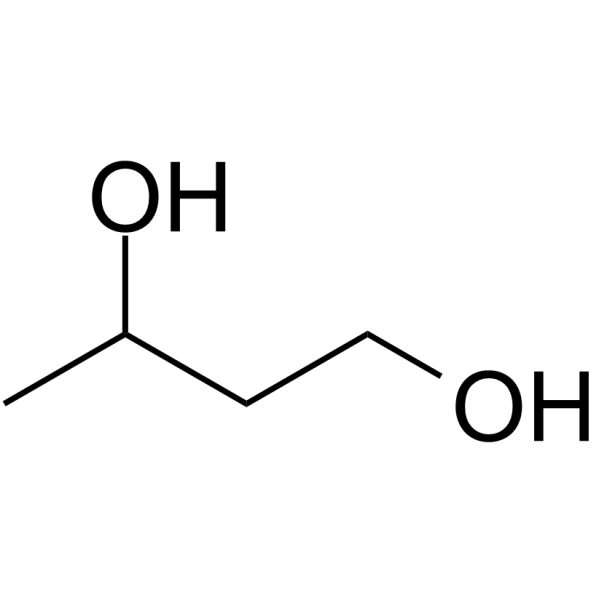
-
GC19661
1,3-Dihydroxyacetone
La 1,3-dihydroxyacétone (DHA), le principal ingrédient actif des préparations de soins cutanés autobronzants et un précurseur important pour la synthèse de diverses substances chimiques fines, est produite À l'échelle industrielle par fermentation microbienne du glycérol sur Gluconobacter oxydans.

-
GC61827
1,3-Dimethylpyrazole
Le 1,3-diméthylpyrazole est un composé bioactif isolé de la racine de bambou Moso.

-
GC67985
1,3-Oxazolidine-2-thione
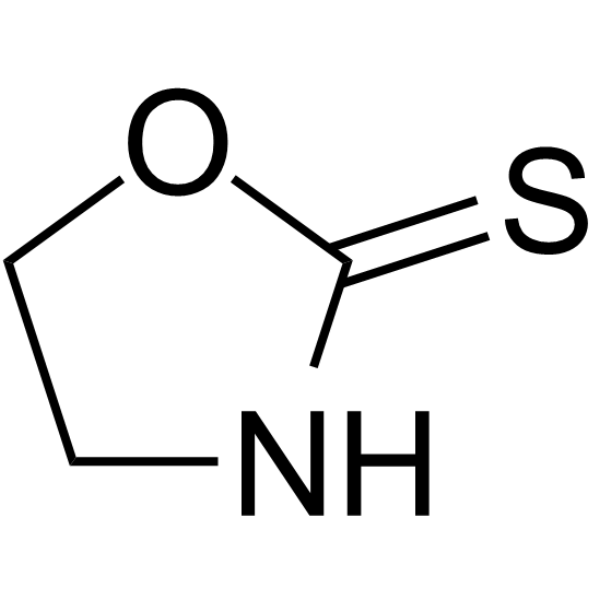
-
GC61709
1,3-Propanediol
Le 1,3-propanediol est produit dans la nature par la fermentation du glycérol dans un micro-organisme.
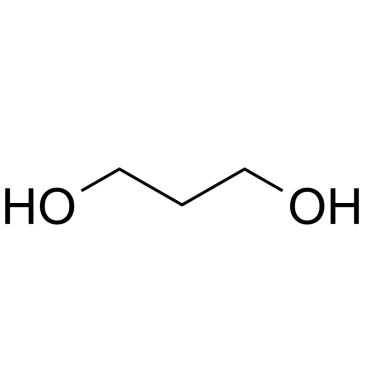
-
GC68134
1,3-Propanesultam

-
GC64247
1,4,7-Triazonane
Le 1,4,7-Triazonane (1,4,7-Triazacyclononane), intermédiaire dans la synthèse de dérivés 1,4,7-trifonctionnalisés, est un réactif possible pour les titrages compleximétriques À haute sélectivité de liaison cationique[2 ].
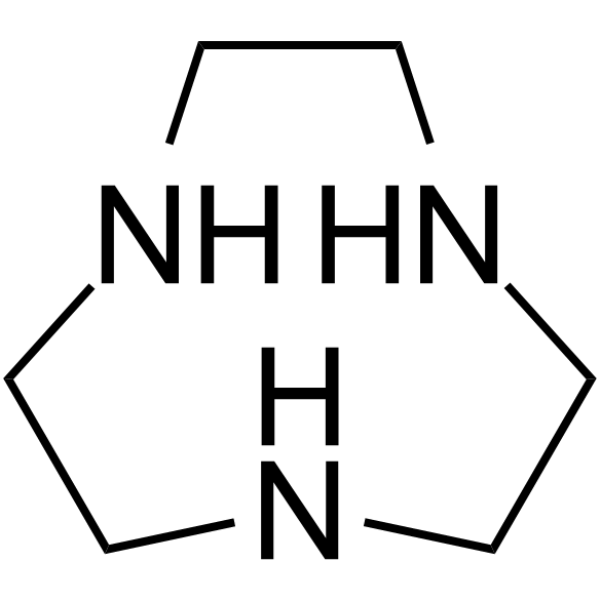
-
GC19528
1,4-Benzoquinone
A toxic metabolite of benzene
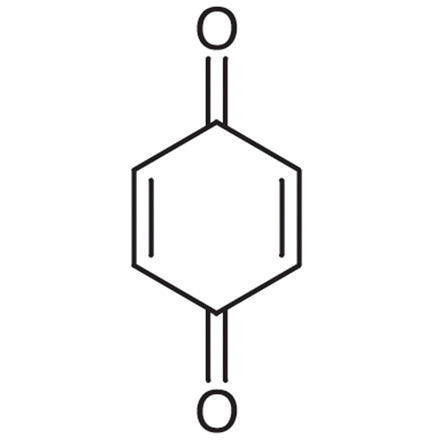
-
GC62755
1,4-D-Gulonolactone
La 1,4-D-Gulonolactone est un métabolite endogène.
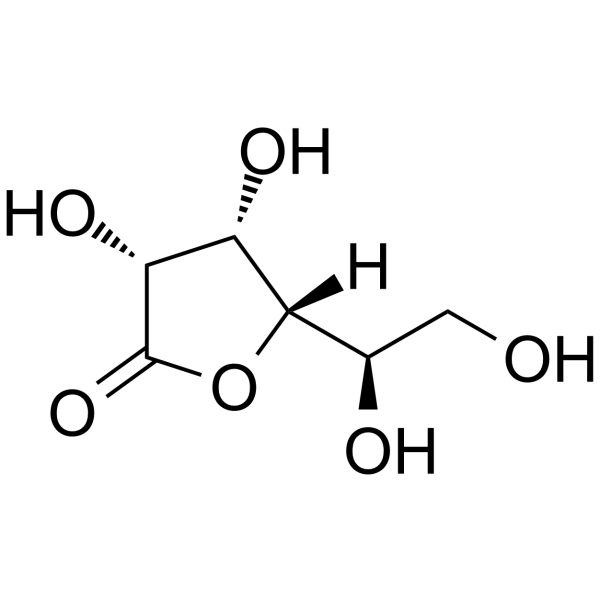
-
GC68486
1,4-Diaminobutane-d8 dihydrochloride
1,4-Diaminobutane-d8 (dihydrochloride) est le déutérium substitué de 1,4-Diaminobutane dihydrochloride. Le dihydrochlorure de 1,4-diaminobutane (putrescine) est un métabolite endogène qui peut servir d'indicateur de la pollution causée par le stress au Cr (III) ou Cr (VI) chez les plantes supérieures telles que l'orge et la colza.
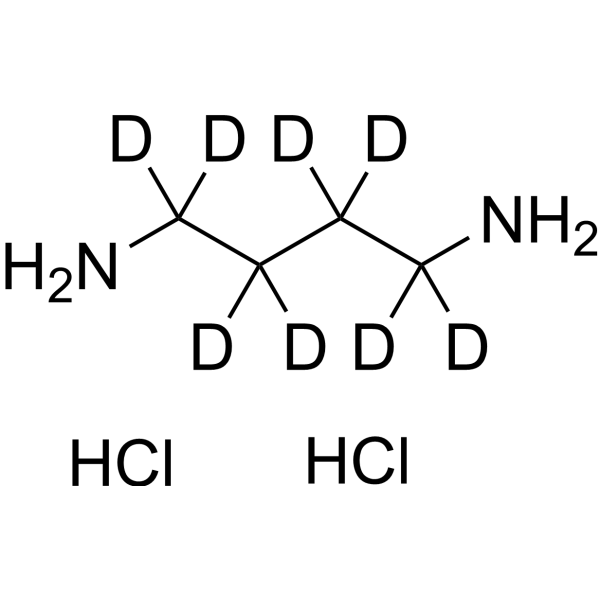
-
GC19683
1,4-Dichlorobenzene
Le 1,4-dichlorobenzène est utilisé comme produit intermédiaire dans la fabrication de pigments, de pesticides et de désinfectants.

-
GC61949
1,4-DPCA ethyl ester
L'ester éthylique de 1,4-DPCA est l'ester éthylique du 1,4-DPCA et peut inhiber le facteur inhibiteur du HIF (FIH).

-
GC19717
1,6-anhydroglucose
Le 1,6-anhydroglucose (1,6-anhydro-β-D-glucopyranose) est un anhydrosucre produit par pyrolyse des glucanes et largement répandu dans la nature.
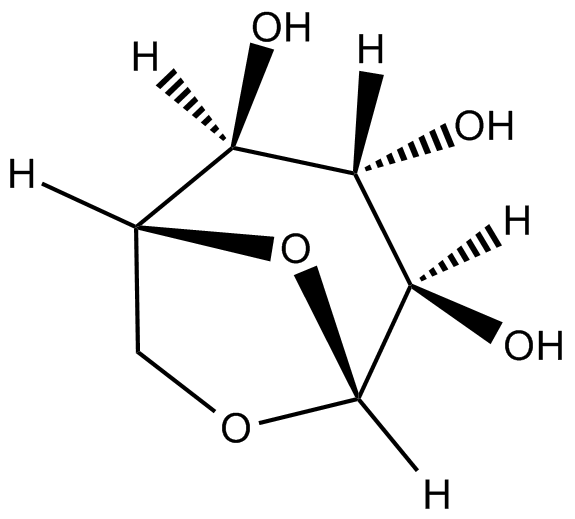
-
GC67200
1,6-Bis(mesyloxy)hexane
Le 16-bismésyloxyhexane est un lieur ADC clivable utilisé dans la synthèse de conjugués anticorps-médicament (ADC).
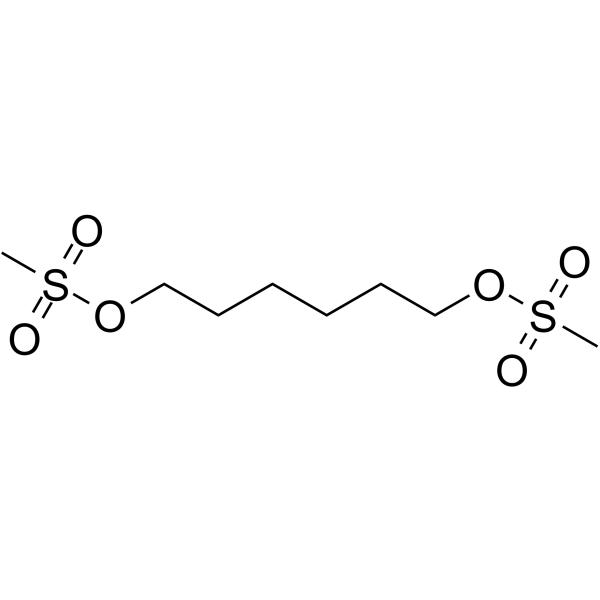
-
GC65551
1-(2'-O-4-C-Methylene-beta-D-ribofuranosyl)thymine
La 1-('-O-4-C-méthylène-bêta-D-ribofuranosyl)thymine est un nucléoside bicyclique.
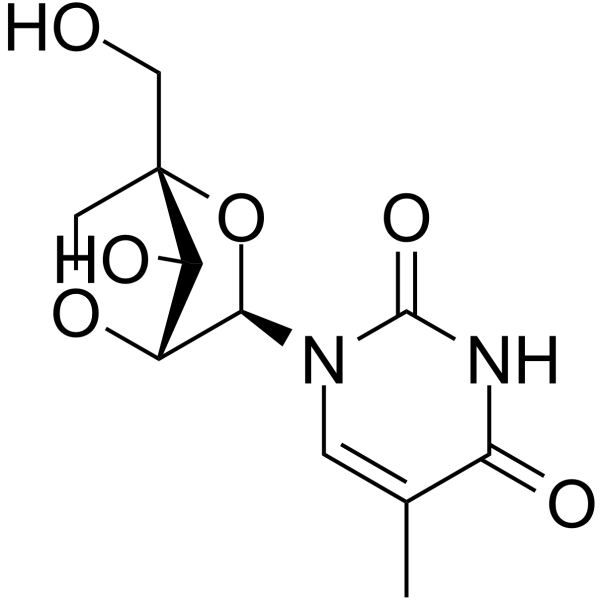
-
GC49537
1-(3,5-Di-tert-butyl-4-hydroxyphenyl)-1,2-ethanediol
A sterically hindered para-alkylphenol

-
GC49346
1-(3-Chlorophenyl)biguanide (hydrochloride)
A 5-HT3 receptor agonist

-
GC49294
1-(4-Chlorobenzhydryl)piperazine
An inactive metabolite of meclizine and chlorcyclizine

-
GC52356
1-1(Z)-Hexadecenyl-2-Arachidonoyl-sn-glycero-3-PC
A plasmalogen

-
GC64404
1-Aminopropan-2-ol
Le 1-aminopropan-2-ol est un métabolisme microbien du métabolisme des aminoalcools via le propionaldéhyde et l'acétaldéhyde chez une espèce de Pseudomonas.
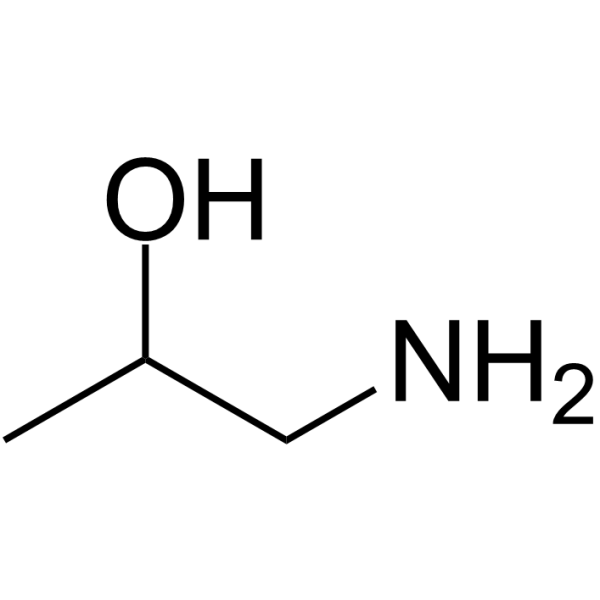
-
GC64176
1-Boc-azetidine-3-carboxylic acid
L'acide 1-Boc-azétidine-3-carboxylique est un lieur ADC non clivable utilisé dans la synthèse de conjugués anticorps-médicament (ADC). L'acide 1-Boc-azétidine-3-carboxylique est également un lieur PROTAC À base de chaÎne alkylequi peut être utilisé dans la synthèse des PROTACup
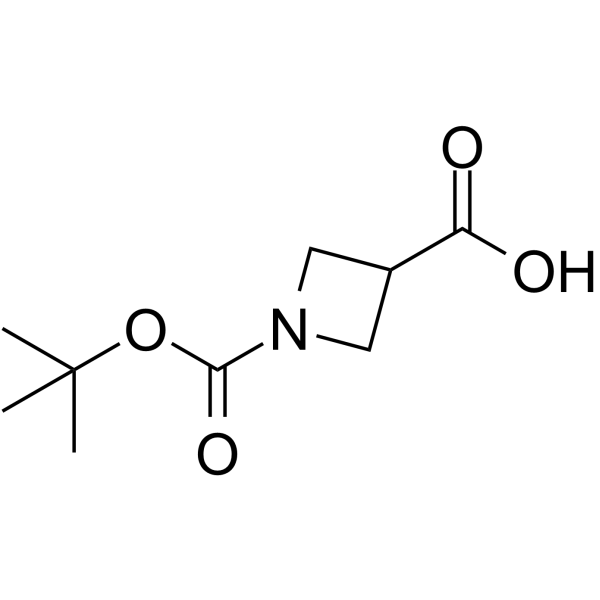
-
GC64159
1-Boc-azetidine-3-yl-methanol
Le 1-Boc-azétidine-3-yl-méthanol est un lieur ADC non clivable utilisé dans la synthèse de conjugués anticorps-médicament (ADC). Le 1-Boc-azétidine-3-yl-méthanol est également un lieur PROTAC À base de chaÎne alkylequi peut être utilisé dans la synthèse des PROTAC
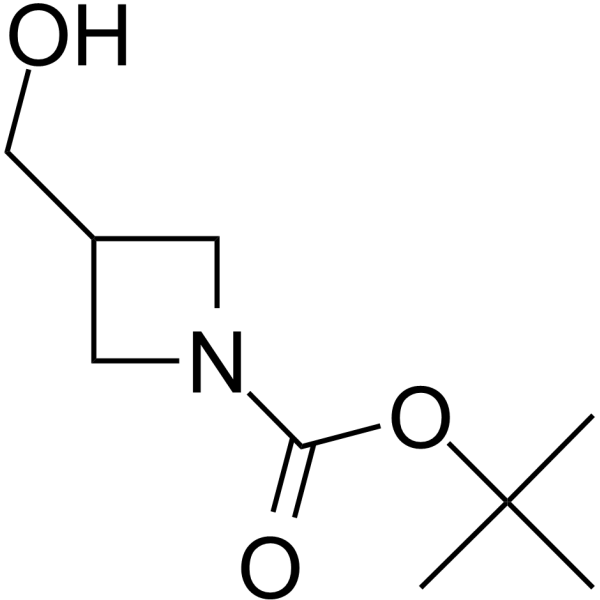
-
GC65223
1-Bromo-6-chlorohexane
Le 1-bromo-6-chlorohexane est un lieur PROTAC pouvant être utilisé dans la synthèse des PROTAC.
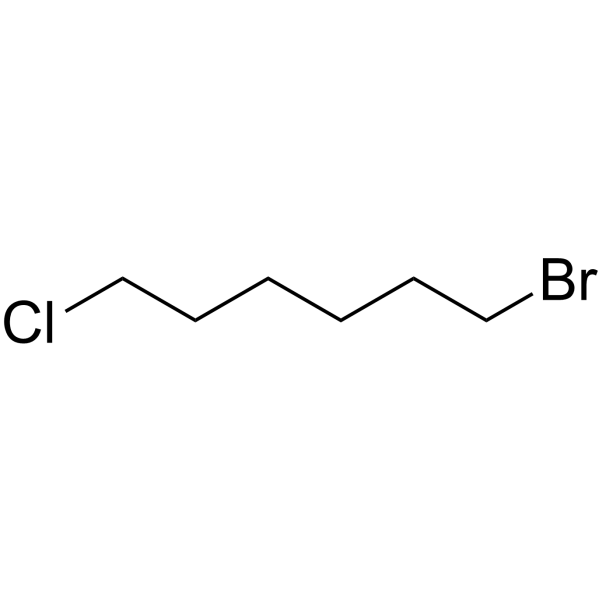
-
GC49861
1-Carboxycyclohexaneacetic Acid
A potential impurity in commercial preparations of gabapentin

-
GC64145
1-Cbz-3-Hydroxyazetidine
La 1-Cbz-3-hydroxyazétidine est un lieur ADC non clivable utilisé dans la synthèse de conjugués anticorps-médicament (ADC). La 1-Cbz-3-hydroxyazétidine est également un lieur PROTAC À base de chaÎne alkyle qui peut être utilisé dans la synthèse des PROTAC.
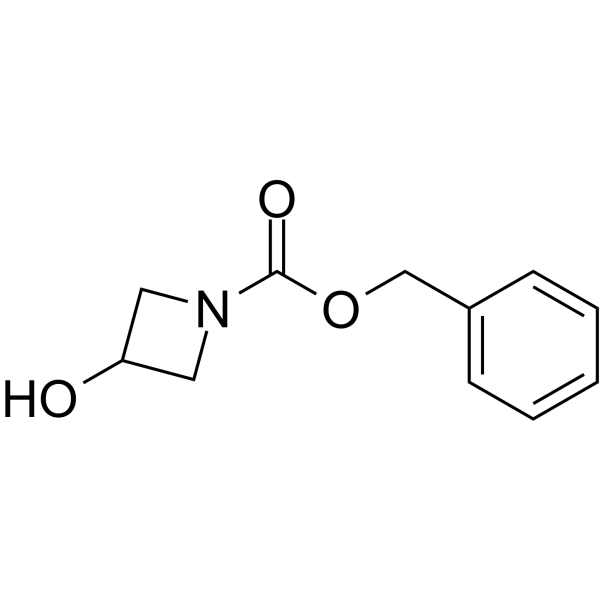
-
GC64047
1-Cbz-azetidine-3-carboxylic acid
L'acide 1-Cbz-azétidine-3-carboxylique est un lieur ADC non clivable utilisé dans la synthèse de conjugués anticorps-médicament (ADC). L'acide 1-Cbz-azétidine-3-carboxylique est également un lieur PROTAC À base de chaÎne alkylequi peut être utilisé dans la synthèse des PROTAC
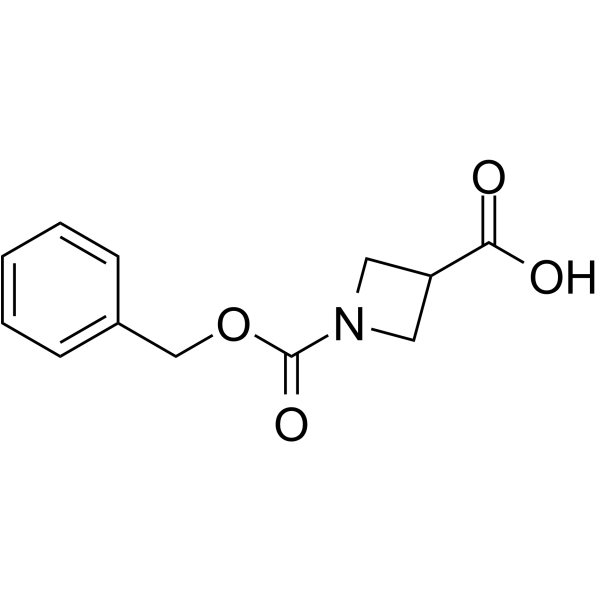
-
GN10317
1-Deoxynojirimycin

-
GC52186
1-Docosahexaenoyl-2-hydroxy-sn-glycero-3-PC

-
GC62760
1-Dodecylimidazole
Le 1-dodécylimidazole (N-dodécylimidazole) est un détergent lysosomotrope et un agent cytotoxique. Le 1-dodécylimidazole provoque la mort cellulaire par son accumulation acido-dépendante dans les lysosomes, la rupture de la membrane lysosomale et la libération de cystéine protéases dans le cytoplasme. Le 1-dodécylimidazole a une activité hypocholestérolémiante et une activité antifongique À large spectre.

-
GC61690
1-Eicosanol
Le 1-eicosanol est un composé naturel À activité antioxydante isolé de Hypericum carinatum.
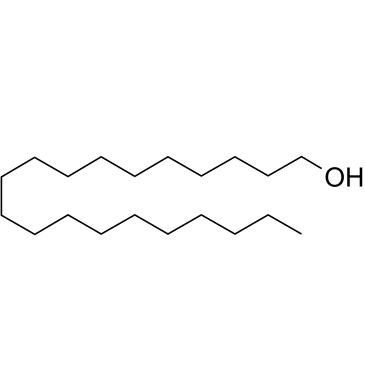
-
GC49470
1-Ethyl-1-nitrosourea (hydrate)
A DNA alkylating agent

-
GC67844
1-Fluoronaphthalene

-
GC62754
1-Furfurylpyrrole
Le 1-furfurylpyrrole a été identifié comme un contributeur potentiel à la saveur et à l'arôme du pop-corn.
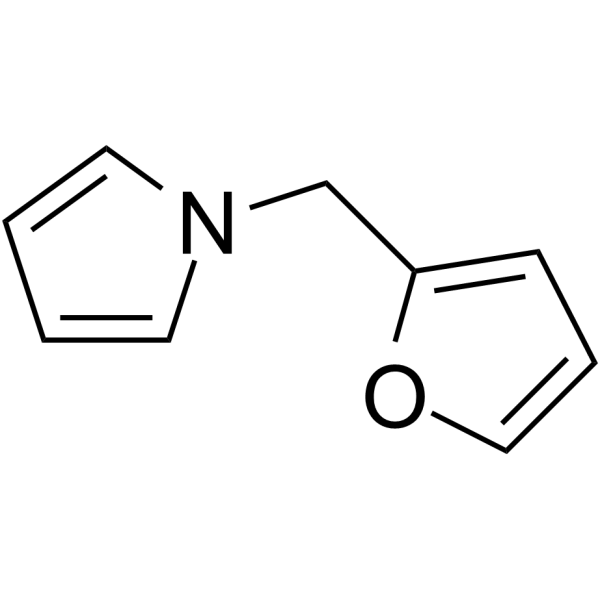
-
GC61642
1-Heptadecanol
Le 1-heptadécanol est un alcool primaire À longue chaÎne À activité antibactérienne issu des feuilles de Solena amplexicaulis.
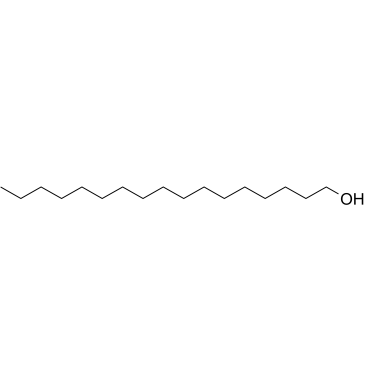
-
GC68495
1-Hexadecanol-d4
1-Hexadecanol-d4 est le déutérium substitué de 1-hexadécanol. Le 1-hexadécanol est un alcool gras, un substrat lipophile.
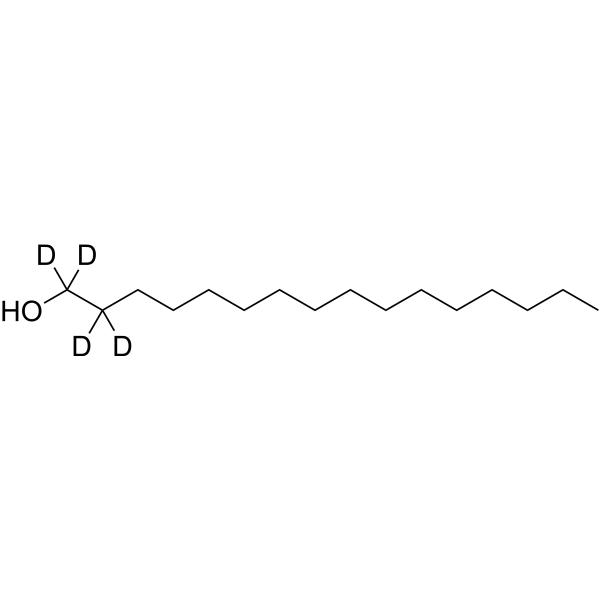
-
GC68496
1-Hexadecanol-d5
1-Hexadecanol-d5 est le dérivé deutérié de 1-hexadécaneol. Le 1-hexadécaneol est un alcool gras, un substrat lipophile.

-
GC61723
1-Hexanol
Le 1-hexanol, un alcool primaire, est un tensioactif qui peut être utilisé dans les procédés industriels pour améliorer les propriétés interfaciales.



